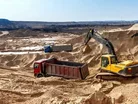Working with indigenous communities

Positive change has been made on a global scale when it comes to improving relations between mining companies and indigenous populations. The UN Guiding Principles on Business and Human Rights was introduced in 2011, the International Finance Corporation’s Guide to Human Rights Impact Assessment and Management (HRIAM) was developed in 2010, and there is a growing recognition within the mining sector that implementing the right to free, prior and informed consent is key to improving relationships with indigenous people. Yet there is still a large gap between what is important to indigenous people and how mining companies are addressing their priorities at a local level.
Many mining countries have little or no legislation when it comes to the rights of indigenous populations; in fact, any laws that do exist tend to fall on the side of the mining companies. Many developing countries have inconsistent policies that fail to balance human rights with mining rights and furthermore, any assessment prior to securing financing and licenses to operate often exclude human elements and rather focus solely on environmental concerns.
According to The North South Institute, “the root of the conflict is the enormous power imbalance between communities on one hand, and companies and governments on the other.” However, the problem arises when the two entities are seen as two opposing forces. There is a school of thought that believes mining firms will reap far greater rewards if they work with the local populous rather than against it.
In this issue of Mining Global we consider ways in which mining firms can better work with indigenous populations to build stronger, more inclusive relations, to reduce conflict and consequently increase profitability.
Develop and understanding of the local culture
Spend time learning about the local culture, their needs, goals and requirements as a community. In order to work with the indigenous people rather than against them, a loose understanding will not suffice. Corporations should take the time to know the history of the area, its long term aims, and underpinning values – only then can trust be built and relationships formed. It is also important for large corporations to look within themselves during this process – they may have to address their own culture in order to align themselves with the community, rather than the other way around.
Give indigenous populations a voice
Local people need to have a voice if relations are going to be built and compromises are going to be made. Mining corporations need to ensure communities have timely access to all relevant information about any proposals affecting indigenous territories. Furthermore they need to offer resources in formats that are culturally appropriate, available in indigenous languages, and easy to understand.
When it comes to environmental planning and social assessments, it is also vital that local communities are made aware of the process and can file opposition should they wish – by passing legislation under the radar, relations will become fractured. With this in mind, it is also important to acknowledge the rights of indigenous people; engage third party experts chosen in consultation with affected communities to assess and verify local conditions so the right decisions can be made.
Find a common ground
It is a mistake for mining firms to automatically assume that indigenous populations have differing community goals. As Paul Klein, writing for Forbes points out, “indigenous people are seeking the same community goals as corporations: better education, more employment and improved economic opportunities.”
With this in mind it would be wise to establish co-management and co-responsibility. After all with shared responsibility for targets and outcomes, comes a shared understanding of benefits. By supporting local economic development, indigenous communities can diversify and develop their own economies so that once the mine leaves, there are sustainable gains – if they can see this happening, the presence of the mine becomes a positive rather than a negative.
Respect the land
During the mining process it is important that mining corporations respect the land. Indigenous populations often have a firm bond with the area and thus seeing it ruined and scarred is a hard pill to swallow. A number of mining corporations are taking strides in this area by developing reclamation projects, meaning that the land is left in the same condition or better once the mine site is closed. It is worth embarking on these schemes and including local committees, so that the end site is one they appreciate and enjoy.
Be patient
Be realistic. It takes time for communities to respond to employment and business opportunities that are presented by extraction projects. Mining companies need to spend time working with communities to understand and act on those opportunities well in advance of the approval stages. Relationships won’t be formed overnight, acceptance won’t come immediately and a willingness to engage needs to be earned. If mining corporations rush this process it will end in conflict.
It’s important to view inclusion as a shared value opportunity. “By building partnerships of respect, investing in ways that help Indigenous communities and people build supply channels and skilled workers, and learning best practices to recruit, retain and advance the indigenous workforce, corporations can create new business opportunities and increase their bottom line,” Kelly Lendsay from the Aboriginal Human Resource Council, told Forbes.
Mining corporations and local populations need to work together – if they do it’s far more likely that both parties will reap rewards.
Featured Articles
Rio Tinto completed its US$6.7bn acquisition of Arcadium Lithium, making it a key company in raw materials mining for batteries in the energy transition
Intel first began to work towards responsibly sourced conflict minerals from the Democratic Republic of Congo and adjoining countries about 12 years
International Energy Forum says mining is the 'paradox' at heart of quest for clean energy but recognises the industry is addressing sustainability issues

